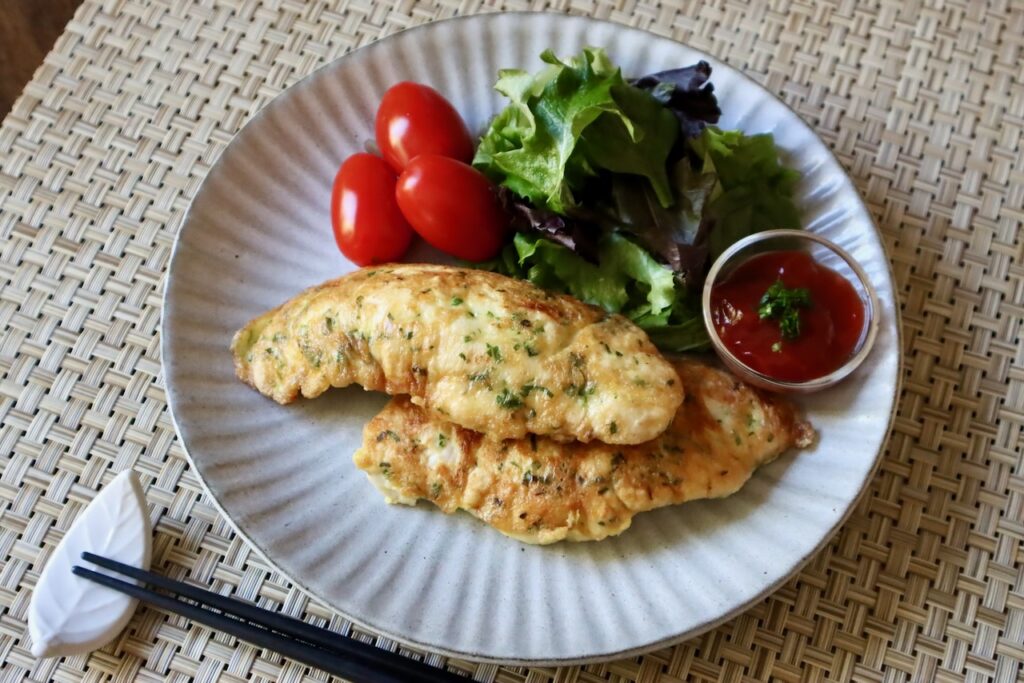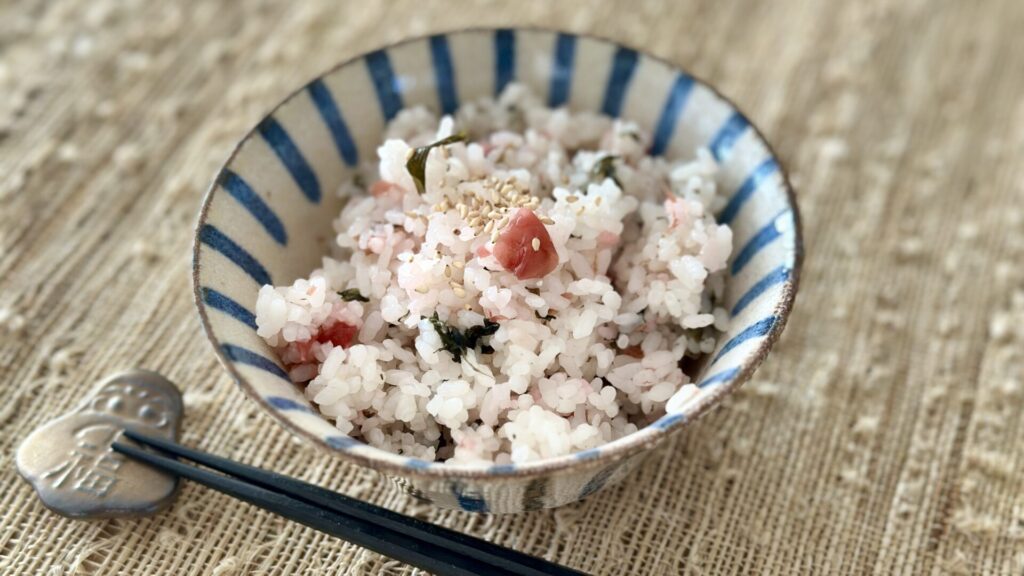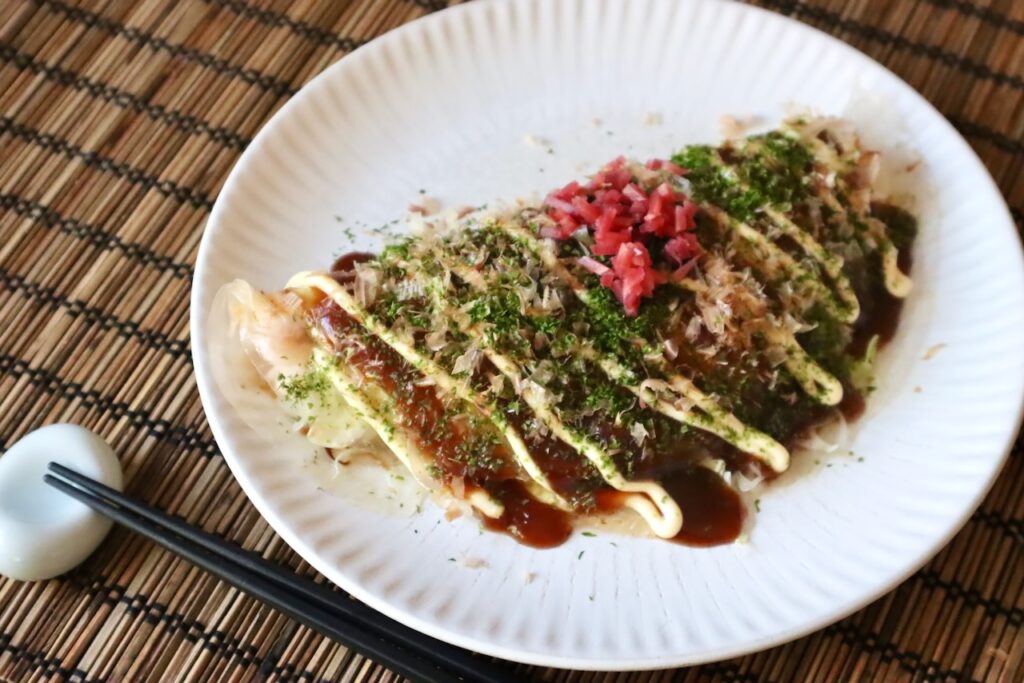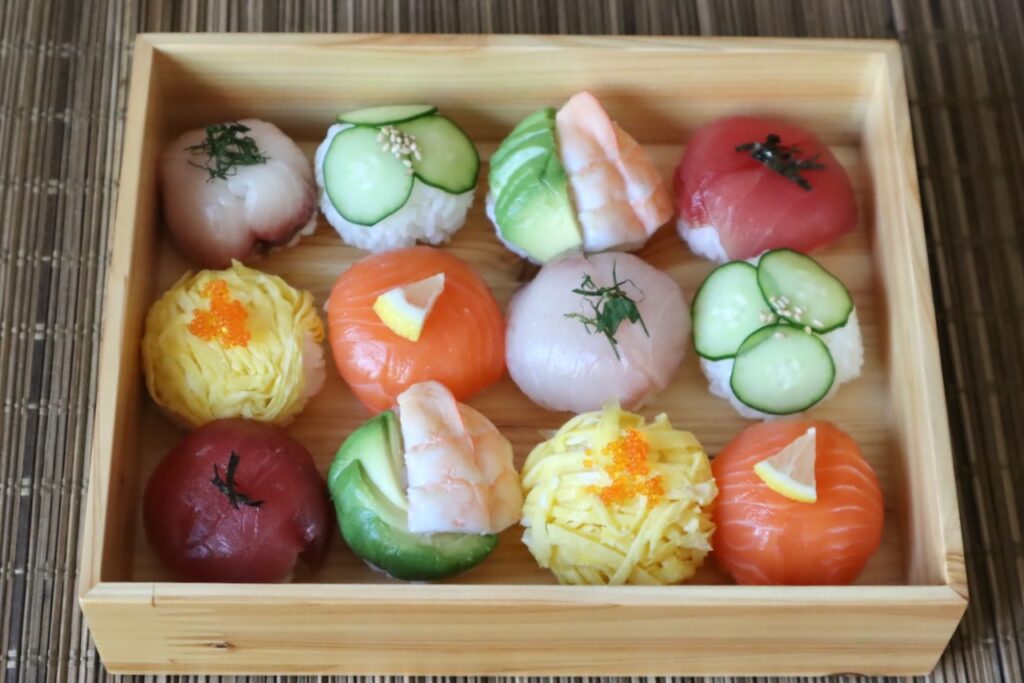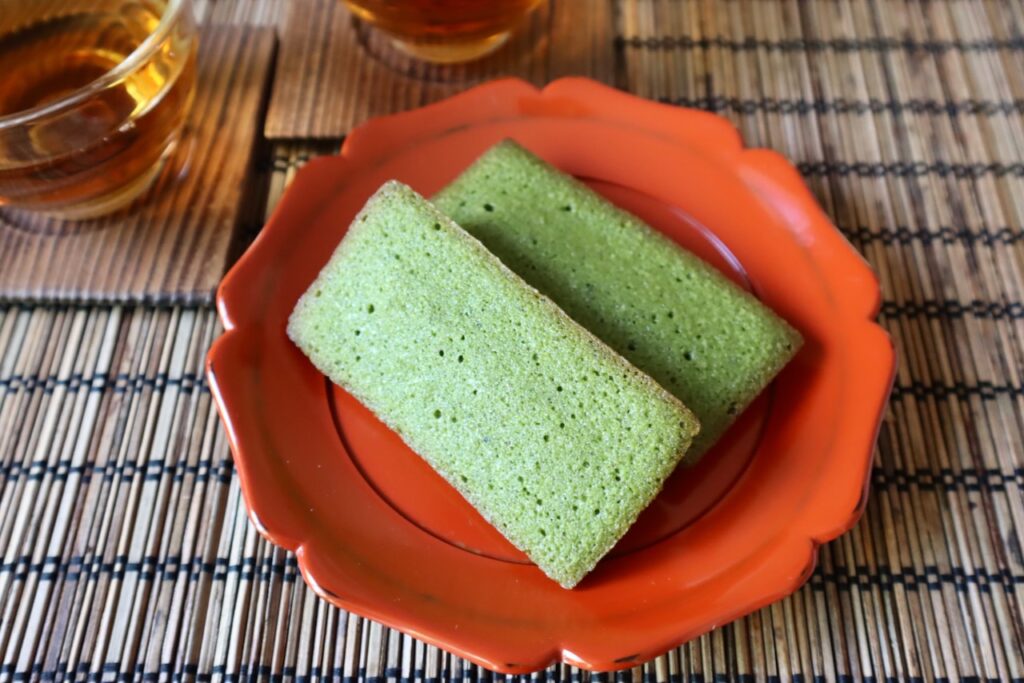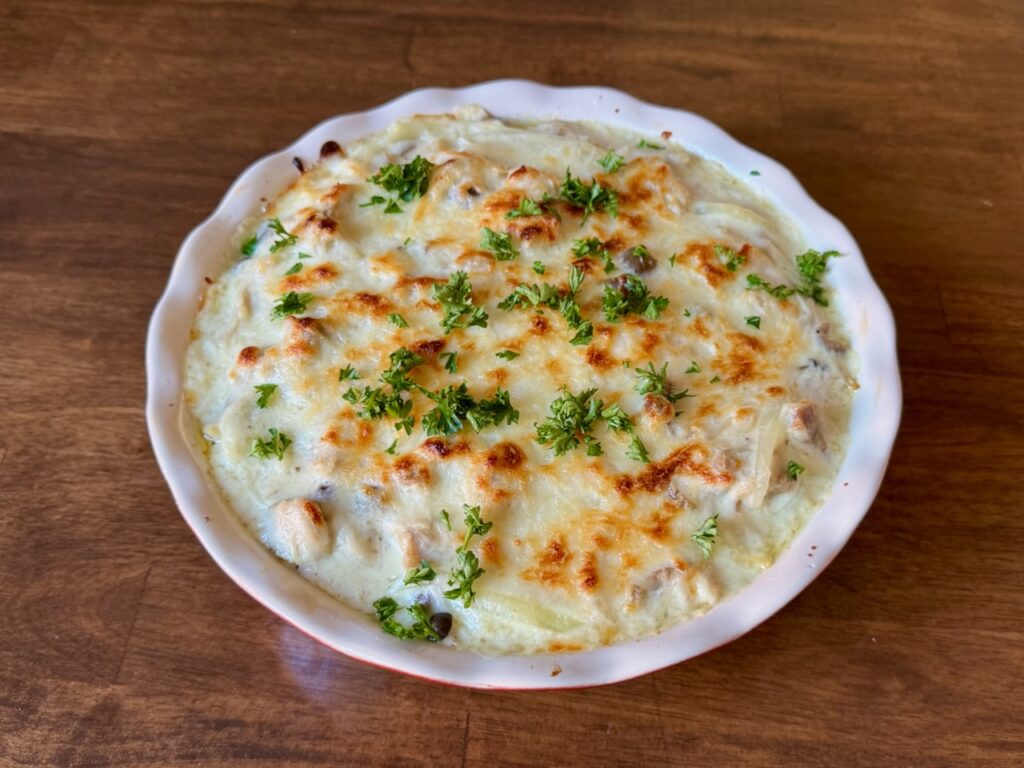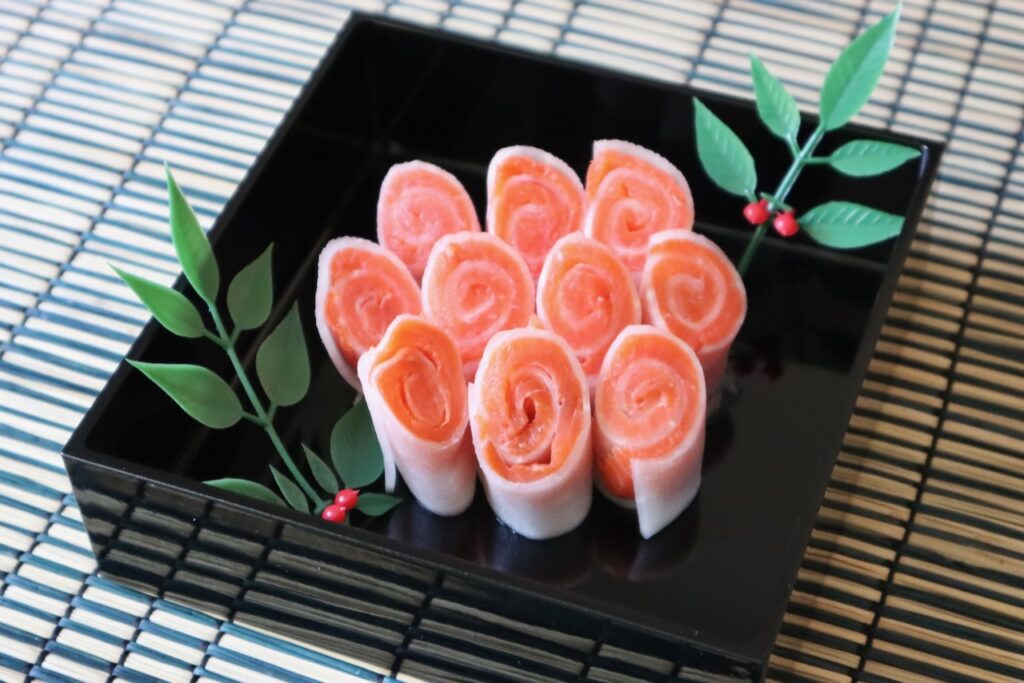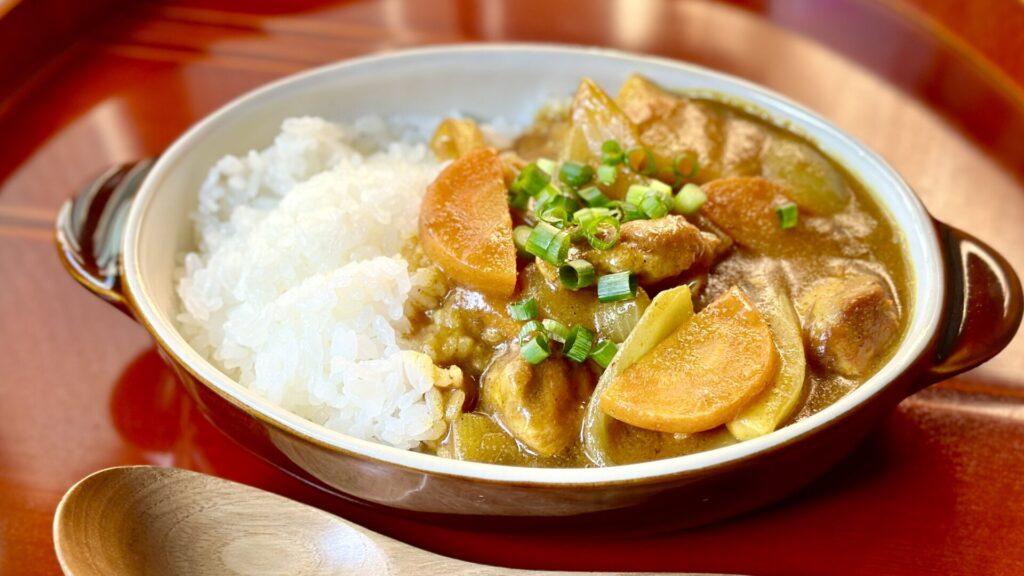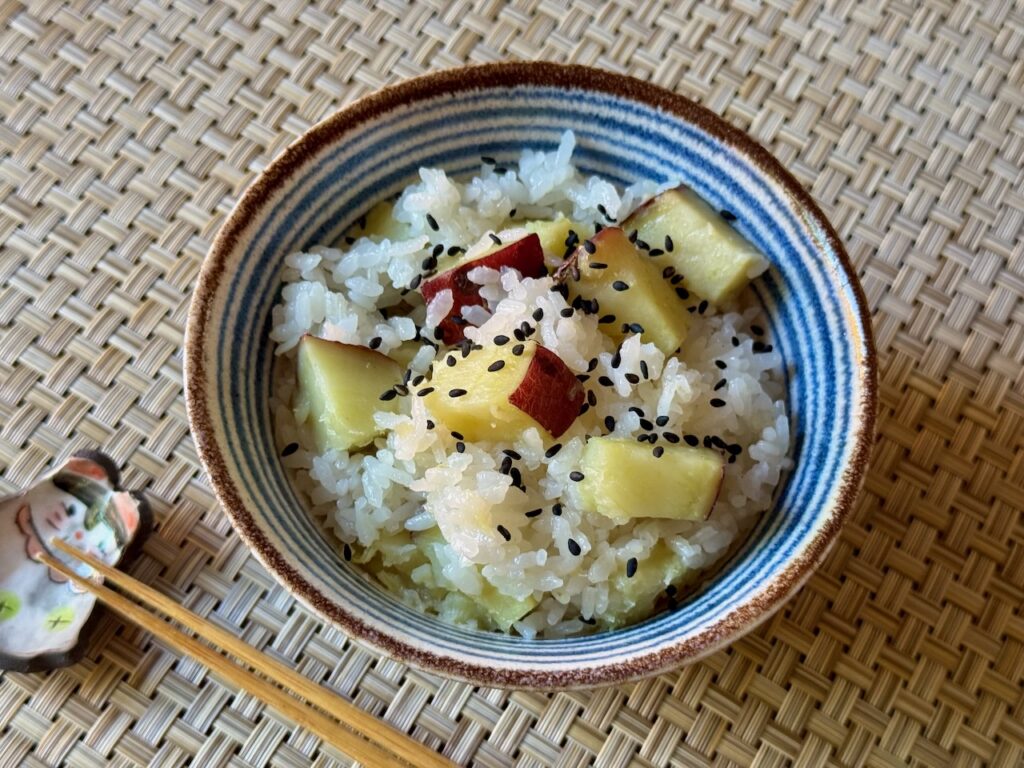Chicken Piccata is a dish prepared by seasoning thinly pounded chicken tenders, coating them in flour, and dipping them in beaten eggs before pan-frying. The dish gets its name from the Italian word piccata, meaning “a thrust with a lance.” The origin of the name is said to come from the cooking technique itself: the chicken cutlets are so thin that they can be turned with a single poke of a fork during cooking.
Ume Wakame Gohan is a simple mixed rice dish made with Umeboshi pickled sour plums and Wakame seaweed. There’s no chopping involved—just combine all the ingredients and let the rice cooker do the work. It’s incredibly easy, but don’t underestimate its flavor. The sourness of the Umeboshi and the umami from the seaweed create a winning combination. This refreshing rice pairs well with any meal on its own and also works wonderfully when made into Onigiri rice balls for breakfast or lunch. Hope you give this one a try soon!
Low-Carb Okonomiyaki is a creative twist on traditional Japanese cabbage pancakes, using rice paper instead of flour to create a lighter, low-carbohydrate version. By omitting the traditional flour base—a crucial pancake ingredient—this recipe offers a healthier alternative without sacrificing flavor. If you love Okonomiyaki but want to reduce your refined carbohydrate intake, or if you’re looking to eat lighter after the winter holidays, this dish is perfect for you. The rice paper, typically used in Vietnamese spring rolls, provides a satisfying chewy texture that may surprise you. While it’s difficult to imagine the final result, this light and healthy version of Okonomiyaki is worth trying for yourself.
Temari sushi is a delightful bite-sized sushi, characterized by its small, round shape and colorful toppings. These perfectly formed balls of vinegared rice are adorned with an array of ingredients, from fresh seafood to vibrant vegetables. The name “Temari” comes from its resemblance to a traditional and decorative Japanese handball, and due to its elegant appearance, this style of sushi is particularly popular at special occasions, festivals, and holidays.
The financier is a classic French pastry – small, rectangular almond-flavored tea cakes similar to madeleines, renowned for their rich yet light texture, nutty aroma, and golden-brown color. While not widely known in the US, financiers have been beloved in Japan for decades. In fact, they’ve become one of the most popular French-origin baked confections in Japan, where they’ve evolved through the addition of Japanese flavors and interesting ingredients.
Doria is a Japanese casserole dish made with rice, creamy white sauce, and cheese. It’s a popular Western-influenced dish (Yoshoku) often served at Kissaten styled coffee shops in Japan. In this recipe, instead of serving in individual gratin dishes, doria is made in a deep pie dish that is ideal for family-style serving. After sauteing the chicken, mushrooms, and onion, we use the same frying-pan to make it simple (and less pots to clean!) Ketchup flavored rice goes really well with the creamy white sauce, but if you would like to skip adding the ketchup, that is totally fine, too. Doria is a hearty, warm, and comforting dish that is perfect for a winter dinner. Enjoy!
Rolled Daikon and Salmon is a vinegar-marinated salad dish and a nice modern addition to Osechi New Year’s cuisine. Smoked salmon and thin daikon radish are rolled together, creating interesting swirls in the lucky colors of red and white—perfect for starting a new year.
Dashi Curry is a curry made without store-bought curry mix but with dashi stock and curry powder, thickened with starch. It’s a simpler type of Japanese curry often found at Soba or Udon noodle shops, in contrast to curry specialty stores that use more complicated spices and ingredients. Unlike traditional Japanese curries that rely on instant curry roux, Dashi Curry offers a more straightforward approach to this beloved comfort food. By using curry powder and Dashi—a fundamental Japanese stock made from bonito flakes—the dish gains a rich, umami depth without relying on processed ingredients. The simplicity of Dashi Curry doesn’t compromise on flavor. Instead, it highlights the clean, subtle tastes of Dashi and the warmth of curry powder, creating a dish that feels simple and homey. I hope you give it a try soon!
Deep-fried chicken wings are an iconic staple in Japanese cuisine, particularly as a crowd-pleasing appetizer. However, from a health perspective, traditional deep-frying isn’t the most nutritious cooking method. Enter the air fryer—a modern kitchen innovation that transforms this beloved dish by reducing significant amount of oil compared to traditional deep-frying.
Satumaimo Gohan or Japanese Sweet Potato Rice is a popular rice dish to make at home when satsumaimo is in season in the fall and winter. Naturally sweet and somewhat sticky satsumaimo go really well with steamed rice. It is so easy to make if you have a rice cooker at home, and you only need 5 ingredients. All you need to do is to put all of the ingredients in the rice cooker and push the button! Salt is all you need for flavor, but adding sake will enhance the aroma. If you don’t have sake or don’t want to use it, you can skip it. Satsumaimo Gohan is great to serve with grilled fish or meat and any seasonal vegetables. Enjoy the taste of the season with this easy and delicious rice dish!
